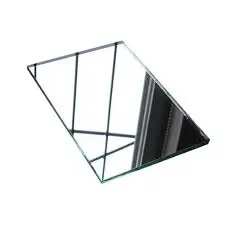

Low-E Glass A Sustainable Solution in China’s Construction Industry
In recent years, the demand for energy-efficient building materials has surged dramatically, especially in rapidly urbanizing countries like China. Among these materials, Low-E (Low Emissivity) glass has emerged as a key player in promoting energy efficiency and sustainability in the construction industry. This article explores the significance of Low-E glass in China, its benefits, technological advancements, and its contribution to the nation’s green building initiatives.
Low-E glass is a type of energy-efficient glazing that features a special coating designed to minimize the amount of infrared and ultraviolet light that can pass through it without compromising the amount of visible light that is transmitted. This characteristic makes Low-E glass an essential material for buildings aiming to reduce energy consumption. In a country like China, where rapid urbanization often leads to increased energy demand, the incorporation of Low-E glass is not just a design choice but a vital step towards sustainability.
Low-E Glass A Sustainable Solution in China’s Construction Industry
Moreover, Low-E glass contributes to a reduction in greenhouse gas emissions. As China works towards its carbon neutrality goals by 2060, the construction industry plays a pivotal role in this quest. Utilizing Low-E glass can significantly lower the carbon footprint of buildings by reducing the amount of energy required for heating and cooling. In urban areas, where air pollution is a pressing concern, more sustainable building practices can significantly improve air quality, enhance urban living conditions, and support public health initiatives.

Technological advancements in the manufacturing of Low-E glass are also noteworthy. Chinese companies have been at the forefront of developing innovative solutions, improving both performance and cost-effectiveness. For instance, advancements in the application of silver coatings allow for higher solar control while maintaining excellent visible transmittance. Such innovations have enabled Chinese manufacturers to produce Low-E glass that meets international standards while also being competitively priced in global markets.
Furthermore, the Chinese government has recognized the importance of energy-efficient solutions in its urban planning policies. The implementation of the Green Building Action Plan and various incentives for green technology usage are encouraging builders and developers to adopt Low-E glass in their projects. As a result, many new constructions, including commercial buildings, residential complexes, and public infrastructure, are incorporating Low-E glass as a standard practice.
In addition to energy efficiency and environmental benefits, Low-E glass also enhances the aesthetic appeal of buildings. With the ability to provide high transparency and clarity, Low-E glass can create visually pleasing structures that allow for the influx of natural light while ensuring comfort. This characteristic is especially valuable in urban development, where the integration of modern architecture with functionality is essential.
In conclusion, Low-E glass is a transformative material that embodies the principles of energy efficiency and sustainability in China’s rapidly evolving construction landscape. Its ability to reduce energy consumption, lower greenhouse gas emissions, and enhance the safety and comfort of indoor environments makes it a significant asset for builders and developers. As China continues to face challenges associated with urbanization and environmental degradation, the adoption of Low-E glass and other sustainable materials will play a crucial role in shaping a greener future. The ongoing advancements in technology and supportive government policies further signify that Low-E glass will remain a cornerstone of China’s journey toward achieving sustainable urban development and energy efficiency in the years to come.